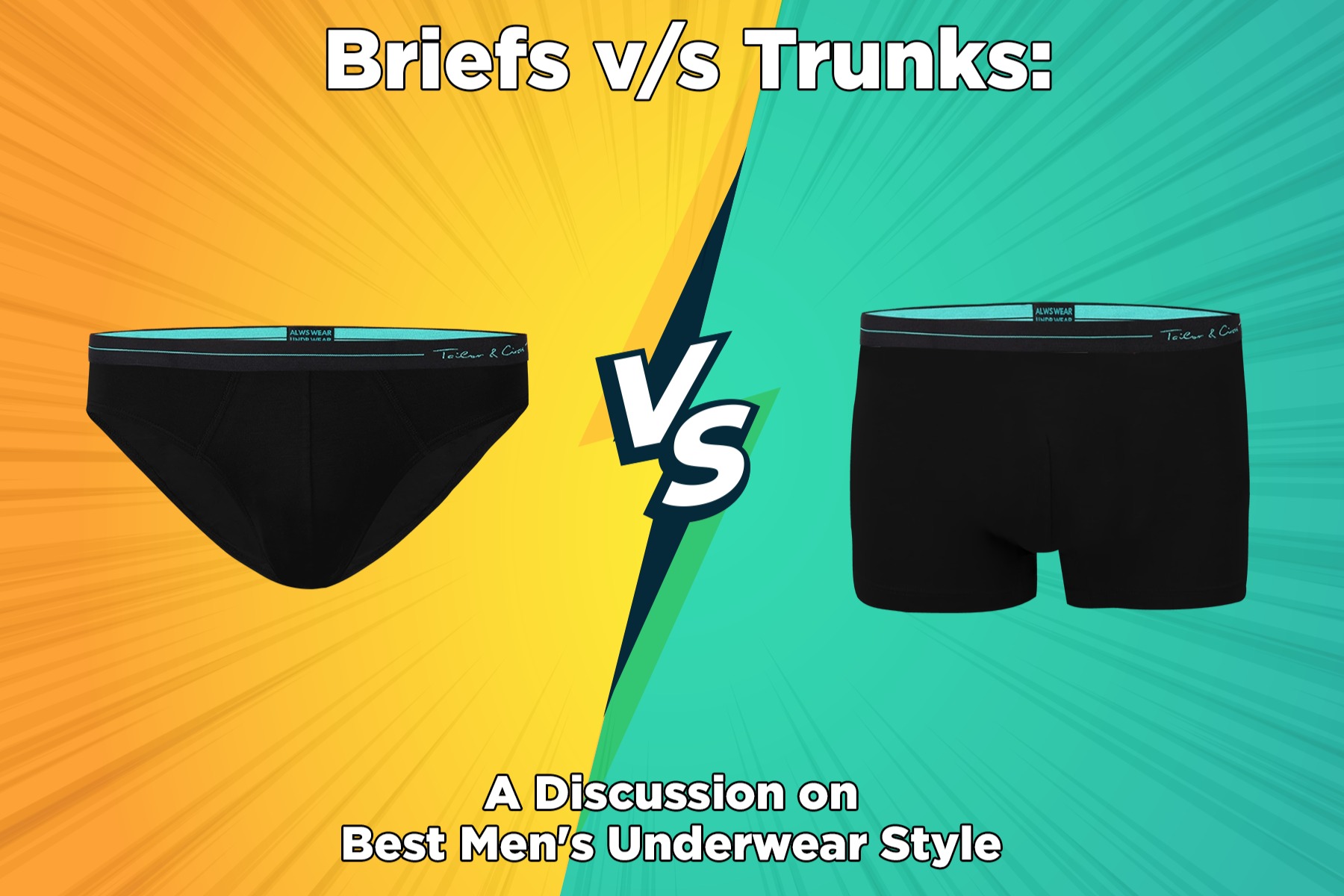Home>Automotive>Resonator Delete Vs. Muffler Delete: The Ultimate Showdown!


Automotive
Resonator Delete Vs. Muffler Delete: The Ultimate Showdown!
Published: January 18, 2024
Discover the pros and cons of resonator delete and muffler delete in this ultimate showdown. Find out which automotive modification is right for you!
(Many of the links in this article redirect to a specific reviewed product. Your purchase of these products through affiliate links helps to generate commission for Noodls.com, at no extra cost. Learn more)
Table of Contents
Introduction
Automotive enthusiasts often seek to customize and optimize the performance and sound of their vehicles. Two popular modifications that cater to these desires are the resonator delete and muffler delete. These alterations can significantly impact the vehicle's exhaust system, resulting in distinct sound and performance changes. Understanding the differences between these modifications and their respective advantages and drawbacks is crucial for car owners looking to enhance their driving experience.
In this article, we will delve into the intricacies of resonator delete and muffler delete, providing a comprehensive comparison of their effects on sound, performance, and legal considerations. By exploring the unique characteristics and implications of each modification, readers will gain valuable insights into the potential impact on their vehicles. Whether you're a seasoned car enthusiast or a curious driver looking to explore the world of automotive modifications, this ultimate showdown between resonator delete and muffler delete promises to offer an illuminating and engaging exploration of these popular customization options.
What is a resonator delete?
A resonator delete involves the removal of the resonator from the vehicle's exhaust system. The resonator, also known as a muffler, is a chambered tube designed to reduce noise and enhance exhaust flow. By eliminating the resonator, the exhaust system undergoes a significant alteration, impacting both the sound and performance of the vehicle.
The resonator plays a crucial role in mitigating exhaust noise by creating sound waves that cancel out undesirable frequencies. However, some car enthusiasts seek a more aggressive and pronounced exhaust note, prompting them to consider a resonator delete. This modification can result in a deeper and more resonant exhaust tone, amplifying the vehicle's auditory presence.
From a performance standpoint, a resonator delete can potentially improve exhaust flow, reducing back pressure and enhancing engine efficiency. The removal of the resonator allows the exhaust gases to exit the system more freely, potentially contributing to a modest increase in horsepower and torque. Additionally, the reduction in back pressure may lead to a more responsive throttle and a subtle improvement in overall engine performance.
It's important to note that the impact of a resonator delete can vary depending on the specific vehicle and its original exhaust configuration. While some cars may experience noticeable changes in sound and performance, others may see more modest results. Furthermore, the absence of a resonator may lead to increased exhaust drone at certain RPM ranges, which can be a consideration for those seeking a balance between enhanced sound and cabin comfort.
In summary, a resonator delete offers car enthusiasts the opportunity to achieve a more aggressive exhaust note and potentially enhance the vehicle's performance characteristics. By understanding the implications of this modification, drivers can make informed decisions regarding their exhaust system customization, aligning with their preferences for sound and performance.
What is a muffler delete?
A muffler delete involves the removal of the muffler from the vehicle's exhaust system. The muffler, also known as a silencer, serves the primary function of reducing exhaust noise by creating acoustic resonance. This component is designed with chambers and baffles that disrupt and cancel out the sound waves produced by the engine, resulting in a quieter exhaust note. However, some automotive enthusiasts seek a more aggressive and assertive exhaust sound, prompting them to consider a muffler delete.
By eliminating the muffler, the exhaust system undergoes a significant transformation, impacting both the sound and performance of the vehicle. The absence of the muffler leads to a more pronounced and raw exhaust tone, characterized by increased volume and a deeper, throatier sound. This modification is particularly appealing to drivers looking to enhance the auditory experience of their vehicles, creating a more exhilarating and attention-grabbing exhaust note.
In terms of performance, a muffler delete can potentially contribute to improved exhaust flow and reduced back pressure. The removal of the muffler allows the exhaust gases to exit the system more freely, potentially leading to a modest increase in horsepower and torque. Additionally, the reduction in back pressure may result in a more responsive throttle and a subtle enhancement in overall engine performance. However, it's important to note that the impact of a muffler delete can vary depending on the specific vehicle and its original exhaust configuration. While some cars may experience noticeable changes in sound and performance, others may see more modest results.
It's essential for drivers considering a muffler delete to be aware of the potential drawbacks associated with this modification. The absence of a muffler can lead to increased exhaust noise, including drone and resonance, especially at certain RPM ranges. This heightened auditory presence may not be suitable for all driving scenarios and could impact cabin comfort, particularly during extended periods of highway driving or daily commutes. Additionally, the removal of the muffler may result in a more prominent exhaust odor, as the muffler plays a role in minimizing the emission of unburned fuel and exhaust gases.
In summary, a muffler delete offers automotive enthusiasts the opportunity to achieve a more aggressive and exhilarating exhaust note, potentially enhancing the vehicle's performance characteristics. By understanding the implications of this modification, drivers can make informed decisions regarding their exhaust system customization, aligning with their preferences for sound and performance.
Pros and cons of resonator delete
Car enthusiasts considering a resonator delete are often drawn to the potential benefits it offers in terms of sound and performance. However, it's essential to weigh these advantages against the potential drawbacks to make an informed decision.
Pros
-
Enhanced Sound: One of the primary attractions of a resonator delete is the opportunity to achieve a more aggressive and resonant exhaust note. By removing the resonator, drivers can experience a deeper and more pronounced exhaust tone, elevating the auditory experience of their vehicles.
-
Improved Exhaust Flow: The elimination of the resonator can lead to improved exhaust flow, potentially reducing back pressure and enhancing engine efficiency. This modification may contribute to a modest increase in horsepower and torque, providing a subtle performance enhancement.
-
Customization: For automotive enthusiasts seeking to personalize their driving experience, a resonator delete offers a means of customizing the sound and performance characteristics of their vehicles. This modification allows drivers to tailor their exhaust system to align with their preferences for a more assertive and captivating auditory presence.
Cons
-
Increased Exhaust Drone: The absence of a resonator can lead to increased exhaust drone at certain RPM ranges, impacting cabin comfort and potentially creating a less enjoyable driving experience. The heightened auditory presence may not be suitable for all driving scenarios and could lead to unwanted resonance within the vehicle's interior.
-
Variable Impact: The effects of a resonator delete can vary depending on the specific vehicle and its original exhaust configuration. While some cars may experience noticeable changes in sound and performance, others may see more modest results. It's important for drivers to consider the potential variability in outcomes when contemplating this modification.
-
Legal Considerations: Before proceeding with a resonator delete, drivers should be aware of the legal implications in their region. Some jurisdictions have regulations regarding exhaust modifications, and a resonator delete may lead to non-compliance with noise and emissions standards, potentially resulting in fines or penalties.
By carefully evaluating the pros and cons of a resonator delete, car owners can make informed decisions regarding this modification, considering its potential impact on sound, performance, and legal compliance. Whether seeking an enhanced auditory experience or a subtle performance boost, understanding the implications of a resonator delete is crucial for those looking to customize their vehicles to align with their driving preferences.
Pros and cons of muffler delete
Car enthusiasts considering a muffler delete are often enticed by the potential benefits it offers in terms of sound and performance. However, it's essential to carefully weigh these advantages against the potential drawbacks to make an informed decision.
Pros
-
Enhanced Sound: The primary allure of a muffler delete is the opportunity to achieve a more aggressive and exhilarating exhaust note. By removing the muffler, drivers can experience a deeper, throatier sound, elevating the auditory experience of their vehicles. The resulting exhaust tone is often characterized by increased volume and a raw, resonant quality, appealing to those seeking a more pronounced and attention-grabbing auditory presence.
-
Improved Exhaust Flow: The elimination of the muffler can lead to improved exhaust flow, potentially reducing back pressure and enhancing engine efficiency. This modification may contribute to a modest increase in horsepower and torque, providing a subtle performance enhancement. The improved exhaust flow allows the engine to expel exhaust gases more freely, potentially resulting in a more responsive throttle and a subtle improvement in overall engine performance.
-
Customization: For automotive enthusiasts seeking to personalize their driving experience, a muffler delete offers a means of customizing the sound and performance characteristics of their vehicles. This modification allows drivers to tailor their exhaust system to align with their preferences for a more assertive and captivating auditory presence. The ability to create a more distinctive and exhilarating exhaust note adds a personalized touch to the driving experience, appealing to those looking to infuse their vehicles with a unique sonic identity.
Cons
-
Increased Exhaust Noise: The absence of a muffler can lead to significantly increased exhaust noise, including drone and resonance, especially at certain RPM ranges. While the heightened auditory presence may be desirable for some driving scenarios, it can also impact cabin comfort, particularly during extended periods of highway driving or daily commutes. The amplified exhaust note may not be suitable for all driving situations, and drivers should consider the potential impact on their overall driving experience.
-
Potential Legal Implications: Before proceeding with a muffler delete, drivers should be aware of the legal considerations in their region. Some jurisdictions have regulations regarding exhaust modifications, and a muffler delete may lead to non-compliance with noise and emissions standards, potentially resulting in fines or penalties. It's crucial for drivers to understand the legal implications of this modification and ensure compliance with local regulations to avoid potential legal consequences.
-
Exhaust Odor: The removal of the muffler may result in a more prominent exhaust odor, as the muffler plays a role in minimizing the emission of unburned fuel and exhaust gases. The heightened exhaust odor may be noticeable both inside and outside the vehicle, potentially impacting the overall driving experience and environmental impact.
By carefully evaluating the pros and cons of a muffler delete, car owners can make informed decisions regarding this modification, considering its potential impact on sound, performance, and legal compliance. Whether seeking an enhanced auditory experience or a subtle performance boost, understanding the implications of a muffler delete is crucial for those looking to customize their vehicles to align with their driving preferences.
Sound comparison: resonator delete vs. muffler delete
When comparing the sound characteristics of a resonator delete and a muffler delete, it's essential to recognize the distinct auditory profiles that each modification offers. Both alterations significantly impact the vehicle's exhaust note, resulting in unique sonic experiences that cater to different preferences and driving styles.
A resonator delete typically leads to a deeper and more resonant exhaust tone, characterized by a pronounced and aggressive sound profile. By removing the resonator, drivers can achieve a more assertive auditory presence, enhancing the vehicle's sonic identity. The resulting exhaust note tends to exhibit a rich and throaty quality, resonating with a commanding and robust sound that captures attention and reflects the vehicle's performance-oriented nature. This modification appeals to drivers seeking a more aggressive and engaging auditory experience, infusing their vehicles with a distinctive and captivating exhaust tone.
On the other hand, a muffler delete introduces a raw and intense exhaust note, characterized by increased volume and a bold, unfiltered sound profile. The absence of the muffler amplifies the vehicle's auditory presence, creating a more exhilarating and attention-grabbing exhaust tone. The resulting sound exhibits a raw and unapologetic quality, resonating with a powerful and commanding presence that reflects the vehicle's assertive and performance-driven characteristics. This modification appeals to drivers seeking a more visceral and adrenaline-inducing auditory experience, elevating the vehicle's sonic identity with a bold and captivating exhaust note.
In comparing the sound characteristics of a resonator delete and a muffler delete, it's important for drivers to consider their individual preferences for exhaust tone and the driving scenarios in which they intend to experience the modified sound. While a resonator delete offers a deeper and more resonant exhaust note, appealing to those seeking a commanding and robust sound profile, a muffler delete introduces a raw and intense auditory experience, catering to drivers looking for a bold and unfiltered exhaust tone. By understanding the distinct sonic qualities of each modification, drivers can make informed decisions regarding their exhaust system customization, aligning with their preferences for an enhanced auditory experience.
In summary, the sound comparison between a resonator delete and a muffler delete highlights the unique auditory profiles that each modification offers, providing drivers with the opportunity to tailor their vehicle's exhaust note to align with their individual preferences for sound and driving style. Whether seeking a deeper and more resonant exhaust tone or a raw and intense auditory experience, understanding the distinct sonic characteristics of these modifications is crucial for those looking to customize their vehicles' sound profile to reflect their driving preferences and personality.
Performance comparison: resonator delete vs. muffler delete
When evaluating the performance impact of a resonator delete versus a muffler delete, it's essential to consider the potential effects on exhaust flow, back pressure, and overall engine efficiency. Both modifications have the potential to influence the vehicle's performance characteristics, albeit in distinct ways.
A resonator delete can lead to improved exhaust flow, allowing the engine to expel exhaust gases more freely. This reduction in back pressure may contribute to a modest increase in horsepower and torque, enhancing the vehicle's overall performance. By eliminating the resonator, the exhaust system experiences reduced restriction, potentially leading to a more responsive throttle and improved engine efficiency. However, the impact of a resonator delete can vary depending on the specific vehicle and its original exhaust configuration. While some cars may see noticeable performance enhancements, others may experience more modest results, necessitating a nuanced evaluation of the potential benefits.
Conversely, a muffler delete also has the potential to improve exhaust flow and reduce back pressure, thereby influencing the vehicle's performance. By removing the muffler, the exhaust system undergoes a transformation that may lead to a modest increase in horsepower and torque, contributing to enhanced engine efficiency. The improved exhaust flow allows the engine to expel exhaust gases more freely, potentially resulting in a more responsive throttle and a subtle improvement in overall performance. Similar to a resonator delete, the impact of a muffler delete may vary depending on the specific vehicle and its original exhaust configuration, necessitating a thorough assessment of the potential performance implications.
It's important to note that the performance impact of both modifications may be influenced by various factors, including the vehicle's engine characteristics, exhaust design, and driving conditions. Additionally, drivers should consider the potential trade-offs associated with these modifications, such as increased exhaust noise and potential legal implications, when evaluating their impact on overall driving experience.
In summary, when comparing the performance impact of a resonator delete versus a muffler delete, drivers should consider the potential effects on exhaust flow, back pressure, and engine efficiency. Both modifications have the potential to enhance the vehicle's performance characteristics, albeit with varying degrees of impact. By understanding the distinct performance implications of these modifications, drivers can make informed decisions regarding their exhaust system customization, aligning with their preferences for enhanced engine efficiency and overall driving experience.
Legal considerations
Legal considerations play a crucial role in the decision-making process for car enthusiasts contemplating a resonator delete or muffler delete. Before proceeding with either modification, it's essential for drivers to be aware of the potential legal implications in their region. Exhaust system modifications are subject to regulations and standards related to noise levels and emissions, and non-compliance with these regulations can result in fines, penalties, and potential legal consequences.
In many jurisdictions, vehicles are required to adhere to specific noise and emissions standards to ensure environmental and public health considerations are met. Modifications that significantly alter the exhaust system, such as resonator delete and muffler delete, may lead to non-compliance with these standards, potentially resulting in legal repercussions for drivers. It's crucial for car owners to thoroughly research and understand the applicable regulations in their region before proceeding with any exhaust system modification.
Furthermore, some regions have specific laws and regulations governing the permissible modifications to a vehicle's exhaust system. These regulations may outline the acceptable sound levels, exhaust emissions, and permissible modifications, providing a framework for drivers to understand the legal boundaries of customization. Car enthusiasts should familiarize themselves with these regulations to ensure that any exhaust system modifications comply with the relevant legal standards.
In addition to noise and emissions regulations, drivers should consider the potential impact of exhaust system modifications on vehicle inspections and certifications. In regions where periodic vehicle inspections are mandatory, modified exhaust systems may undergo scrutiny to ensure compliance with legal standards. Failure to meet these standards during inspections can result in the vehicle being deemed non-compliant and subject to penalties or restrictions on road usage.
It's important to emphasize that the legal implications of exhaust system modifications are not uniform and can vary significantly from one region to another. Therefore, drivers should conduct thorough research and seek guidance from local authorities or automotive professionals to ensure compliance with applicable regulations.
In summary, legal considerations are paramount when contemplating a resonator delete or muffler delete. Drivers must carefully assess the potential legal implications of these modifications, including compliance with noise and emissions standards, adherence to specific regulations, and the impact on vehicle inspections and certifications. By understanding and adhering to the legal framework governing exhaust system modifications, car enthusiasts can make informed decisions that align with legal requirements and ensure a compliant and enjoyable driving experience.
Conclusion
In conclusion, the ultimate showdown between resonator delete and muffler delete offers a comprehensive exploration of these popular exhaust system modifications. Both alterations present car enthusiasts with the opportunity to customize the sound and performance characteristics of their vehicles, catering to individual preferences for a more assertive and captivating driving experience.
The resonator delete, characterized by a deeper and more resonant exhaust tone, appeals to drivers seeking a commanding and robust sound profile. This modification offers the potential for improved exhaust flow and a subtle increase in engine performance, aligning with the preferences of those looking to infuse their vehicles with a more aggressive auditory presence. However, the increased exhaust drone and potential legal considerations associated with this modification warrant careful evaluation before proceeding with the resonator delete.
On the other hand, the muffler delete introduces a raw and intense exhaust note, appealing to drivers seeking a bold and unfiltered auditory experience. This modification also offers the potential for improved exhaust flow and a subtle enhancement in engine performance, contributing to a more exhilarating driving experience. However, drivers should consider the increased exhaust noise, potential legal implications, and heightened exhaust odor associated with the muffler delete when weighing its impact on overall driving enjoyment.
The comparison of sound and performance characteristics, along with the legal considerations, underscores the importance of informed decision-making when contemplating these modifications. Drivers must carefully evaluate the potential benefits and drawbacks of each alteration, taking into account their individual preferences, driving scenarios, and legal compliance.
Ultimately, the choice between a resonator delete and a muffler delete hinges on a driver's inclination toward a deeper and more resonant exhaust tone or a raw and intense auditory experience, as well as their willingness to navigate potential legal considerations. By understanding the implications of these modifications and aligning them with personal driving preferences, car enthusiasts can embark on a customized journey to tailor their vehicles' sound and performance characteristics, creating a driving experience that resonates with their individuality and passion for automotive customization.













